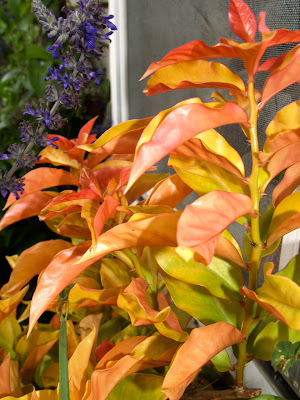
 Pereskia aculeata 'Godseffiana' Lemon-Vine, Ramo de Novia
Pereskia aculeata 'Godseffiana' Lemon-Vine, Ramo de Novia
One thing you don't expect from a member of the Cactus family is a climber with colourful leaves.The leaves at this time of year turn a coppery rose colour and develop purple undersides and just to remind you that this plant is a cactus, thorns lurk under the lush foliage. The plain green form of this plant is found naturally in the Florida Keys, most of the West Indies, through Brazil, Venezuela and into Paraguay but is not recommended for Australian gardens in the sub-tropics because of its weed potential. I grow mine in a large pot and take cuttings at this time of the year which strike readily though growth can be slow to start off with. During winter I give it a rest like other cactus and lay off the water and fertilizer. It is good against a hot western facing wall or can be trained to grow up a tree.
2017 update: I occasionally have plants available for sale.
2017 update: I occasionally have plants available for sale.










